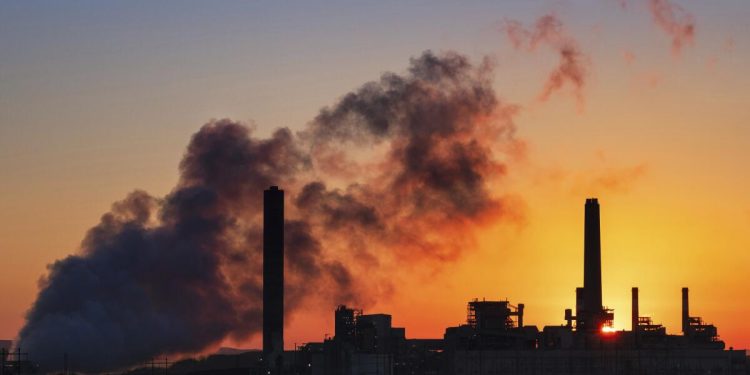On Thursday, the Supreme Court halted an interstate air quality regulation that was implemented by the Biden administration in 2020. The rule aimed to reduce the amount of ozone produced by power plants and industrial facilities in the Midwest, which then spreads polluted air towards the East Coast.
In dissent, Justice Amy Coney Barrett sided with the three liberals, resulting in a 5-4 vote.
As part of the Clean Air Act, the “good neighbor” rule mandates that sources of air pollution in upwind states must take action to decrease it if it is impacting the air quality in downwind states. According to the Environmental Protection Agency, this rule guarantees that the air pollution in downwind states is mitigated by the upwind states that contribute to it.
The EPA has recently announced its focus on 23 states for implementing stricter regulations. This includes California, among other states.
However, the implementation of the rule was hindered by a legal dispute between the Democratic administration and the Republican-led states.
Texas and twelve other states successfully challenged the EPA’s determination that their air pollution standards were insufficient, as ruled by U.S. appeals courts.
The new rule was effectively blocked by these decisions, protecting the states from its impact.
Despite facing opposition, the EPA remained determined in its efforts to implement the new “good neighbor” rule in the Midwest states that were still awaiting exemptions.
The Biden administration contended that implementing a court-mandated “delay” would result in severe damage to the states located downwind that are plagued by emissions from their upwind neighbors. This would place an unfair responsibility on these states to achieve healthy air quality while exposing their inhabitants to potential public health hazards.
The states of Ohio, Indiana, and West Virginia have directly approached the Supreme Court, requesting an order to halt the EPA’s rule, at least temporarily.
According to the opponents of the EPA’s regulations, the Clean Air Act assigns the crucial duty of ensuring air quality to states. They emphasized that the EPA’s attempt to expand its authority should be stopped to prevent a “power grab.” They also claimed that the stricter regulations proposed by the EPA would negatively impact their businesses and cause instability in the power grid by reducing electricity production.
Justice Neil M. Gorsuch, in his statement, emphasized the importance of states taking the lead in creating compliance plans. He stated, “EPA has no authority to question the wisdom of a state’s choices of emission limitations.” This highlights the role of states in developing and implementing plans for reducing emissions.
Typically, the Supreme Court reviews cases only after a federal judge and U.S. appeals court have issued their rulings. However, due to the unique legal circumstances of this particular case, the Supreme Court took an unprecedented procedural step.
The justices decided to take on the case of Ohio vs. EPA despite no prior ruling from lower courts regarding the new regulation. They agreed to hear arguments and draft a decision on the matter.
The state of California remained a mere spectator in the battle for clean air as the recent EPA regulation did not have any impact on power facilities within its borders. Nonetheless, the rule would have implications for industrial locations in the state from 2026 onwards.

